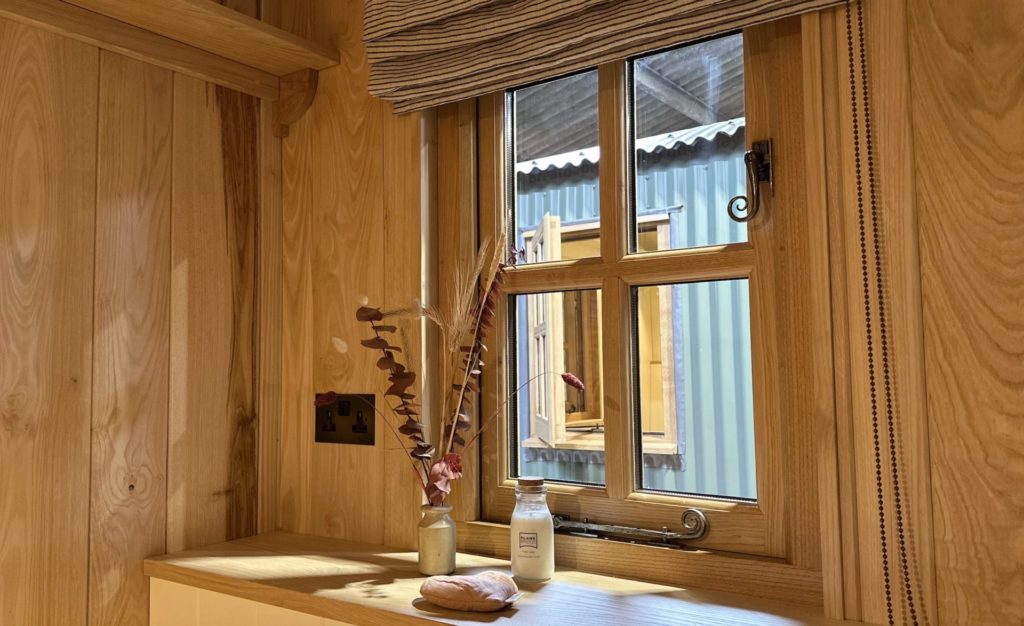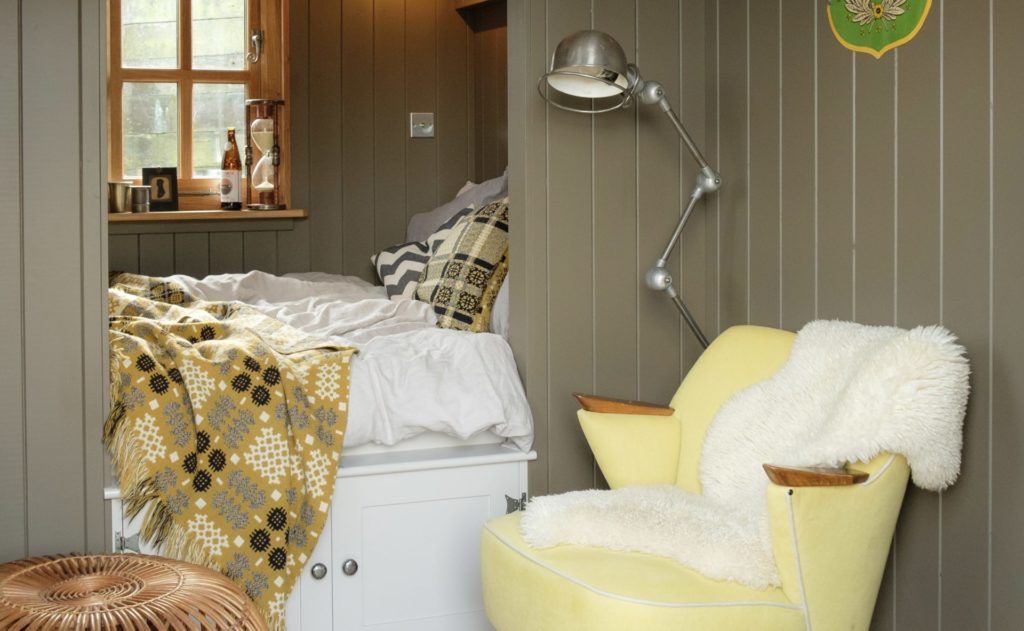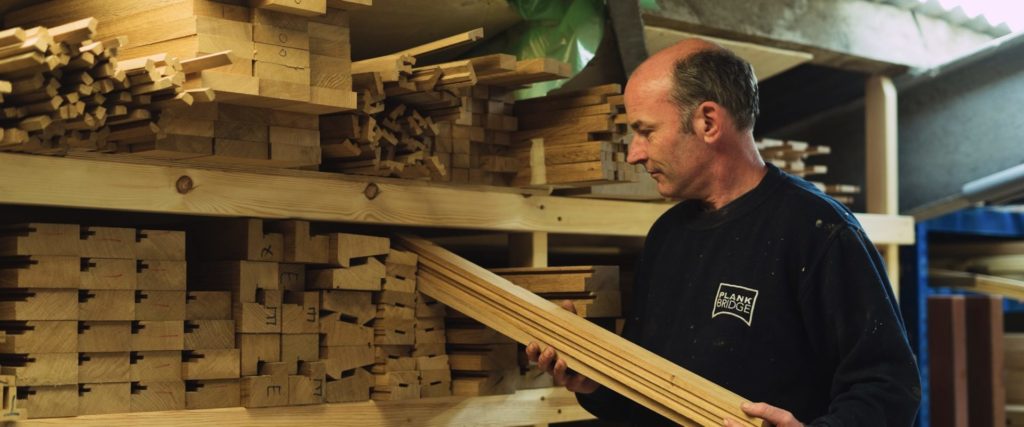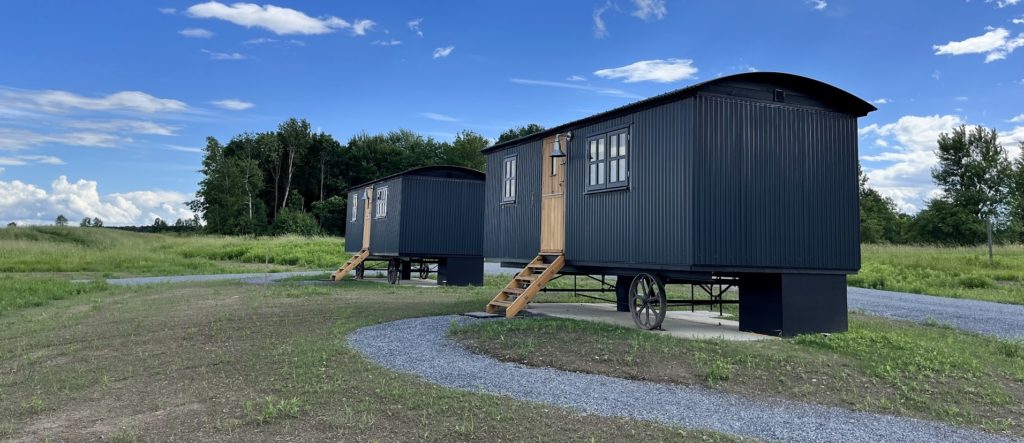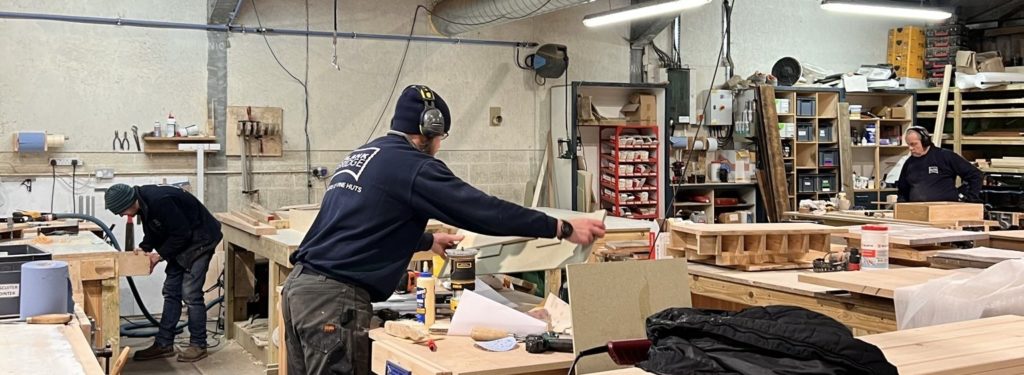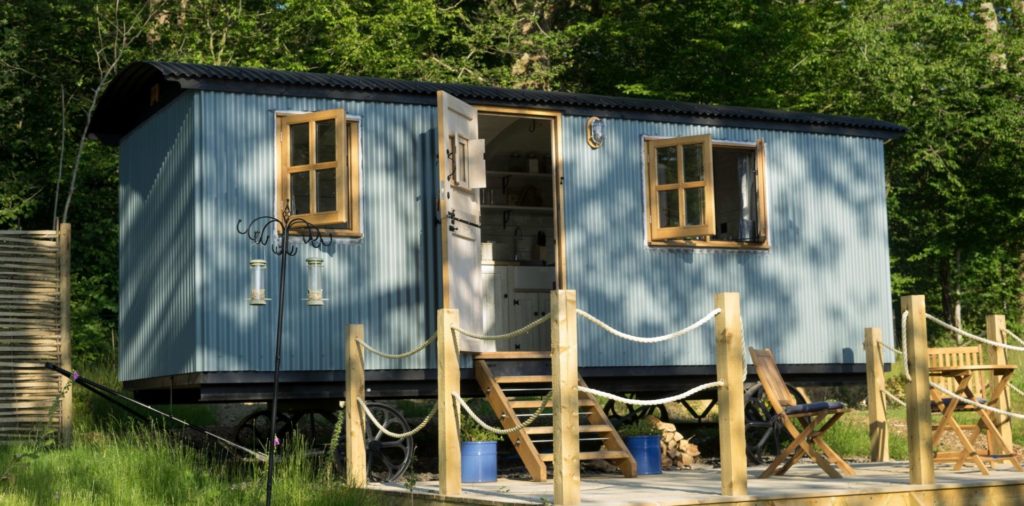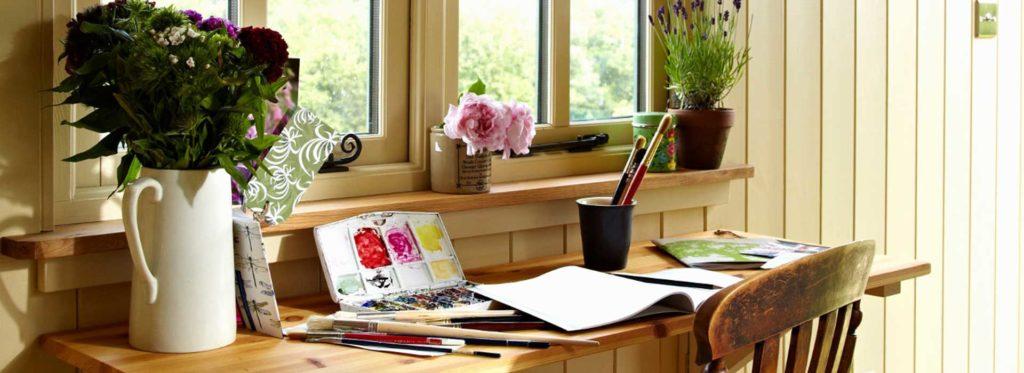With spare time during lockdowns in 2020, and gradual opening up to ‘a new normal’ I thought I would look at shepherd’s huts through the eyes of anyone who loves the idea but isn’t in the market for a new build. If you are interested in what to look for in a second hand shepherd’s hut, an antique original, then read on…
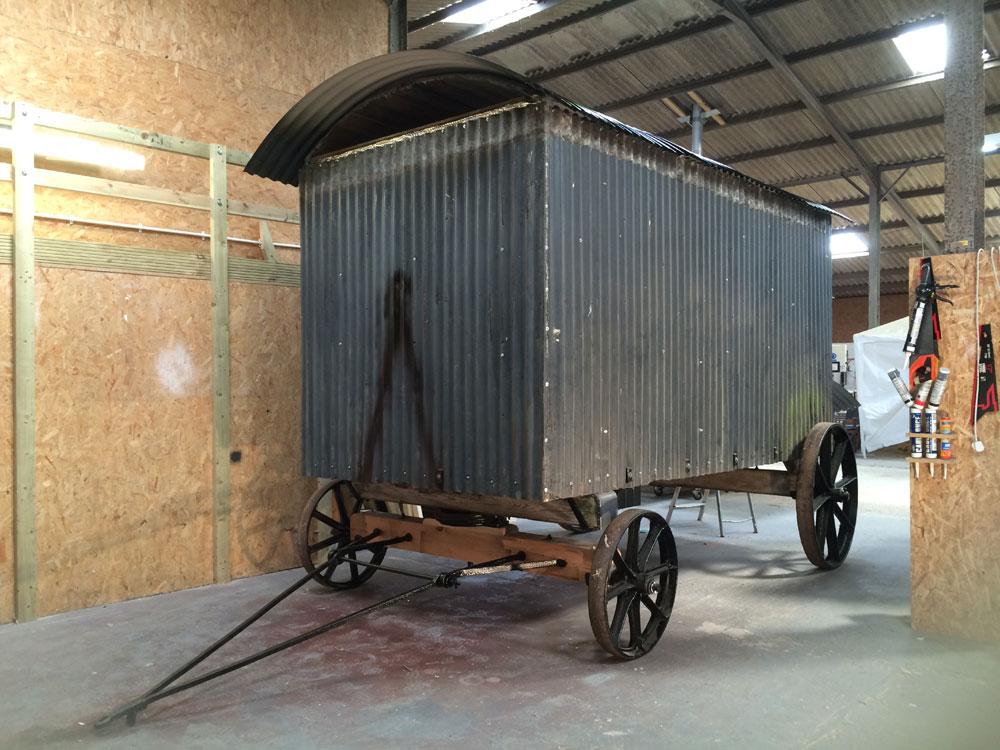
Original Huts
Shepherd’s huts as we know them, on stout cast iron wheels and with a curved roof, or occasionally a pitched roof, have been around since the mid 1800’s. Corrugated iron was invented in 1850 as a material for covering the wharf buildings of London, as huge quantities of goods were arriving by ship up the River Thames which needed shelter. It was a new and exciting cladding material which could form curves and span wide spaces, a structural material which must have seemed revolutionary at the time. They soon invented galvanising to add durability to the steel sheets. I like to think of news of this innovation drifting out to the shires, and smaller engineering firms and village blacksmiths adopting it for a range of practical purposes. As sheep farming grew hugely through the later Victorian period, corrugated iron just happened to be in the right place at the right time. The now iconic design has evolved into the contemporary, often larger, shepherd’s huts that are increasingly familiar today.
Here are ten tips to help you out when buying a second hand or original hut:
1. The shepherd’s hut chassis
If you are looking at an original hut, and they do appear from time to time, the junction between the axle and wheel is a good starting point. Some huts had a wooden axle beam with an iron stub axle set into it. These often decay at this point as the weather will sit on the end of the timber. We have spliced in new wood and capped the ends with some careful lead work, or galvanised metal sheet. I quite like what I call ‘farmyard repairs’ which are often evident in old huts. You can see where someone has bolted metal straps across a cracked axle, or wrapped a wrought iron metal band around the axle beam. I think it is much more authentic to continue this ‘make do and mend’ if you can, as people in the future can read the history. It’s close to time travel in a way. Stripping back everything and replacing with new timber work is very much a last resort.
Old wheels can be rusted to the axles. Careful heating in a large fire usually frees them up as the metal expands, but it needs to be controlled so the metal doesn’t crack. I’ve also freed them by wrapping the hub with a diesel-soaked rag for a few weeks.
We much prefer an all metal chassis for our own huts, following the Victorian examples of Reeves of Bratton and Farris of Shaftesbury, who seemed to have moved from timber axle to solid steel for added durability and strength.
You can read more about shepherd’s hut chassis here.
2. Shepherd’s hut wheels
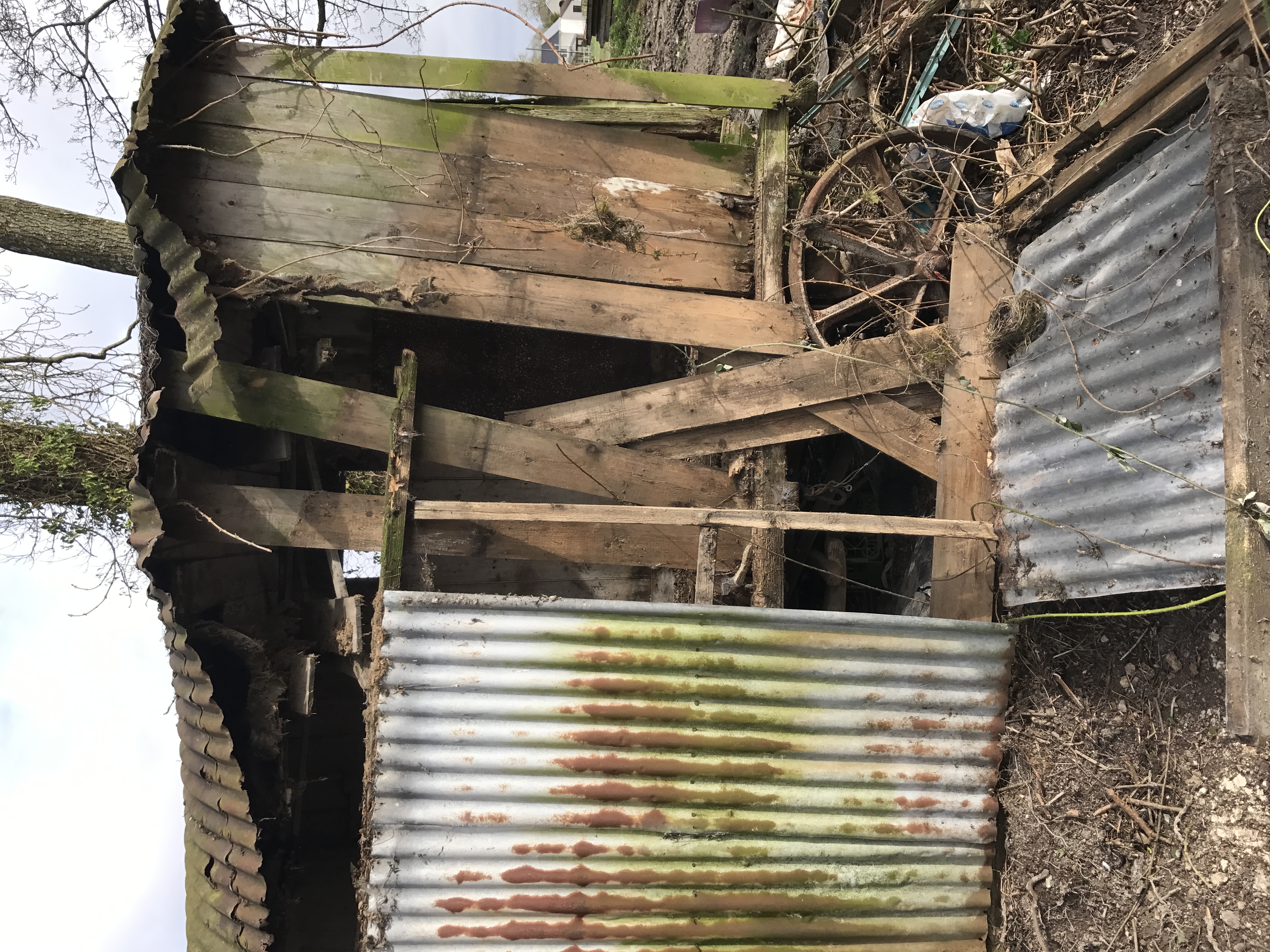
A genuine shepherd’s hut has larger iron wheels at the door end and smaller wheels, which can pass under the sides of the hut, at the steering end. The steering axle is mounted to a steering plate which allows the hut to be very manoeuvrable and negotiate gateways. If you can find a set of original wheels, and steering plate with the A frame draw bar for towing then you are very lucky. Buy it. I bought a set of wheels fifteen years ago for £10. These days a good complete set could be £1000, maybe more. Some wheels were completely cast from molten pig iron, like the wheels we have made for our huts. Some larger examples had a cast iron hub and rim and steel spokes, which meant the wheels could be as big as they liked. It’s interesting to note that shepherds huts had the wheels mounted outside the body of the hut, and a roadman’s living van had the wheels underneath. As shepherd’s huts have become wider, and longer, for modern uses the wheels have to go underneath and represent a necessary hybridisation of the two heritage originals.
Cast iron shepherd’s hut wheels can be cracked after years of trundling over stone and flint tracks. A skilled welder can weld cast iron to make a good repair. But original huts would have had a steel band wrapped around the whole rim to repair a crack or break, which would have been strong enough for the use they were subjected to. We have rolled steel bands to heat up and then shrink onto a broken rim.
Do be careful if you see wheels advertised. Some people take farm ‘Cambridge rollers’ apart and sell the rings as wheels. They aren’t. You can spot these as the rim isn’t flat, it’s raised to a peak in the middle. And they are much smaller than a shepherd’s hut wheel and are lighter in construction. It’s a rural fiddle to be wary of.
You can read more about shepherd’s hut wheels here.
3. Shepherd’s hut chassis kit
If you can’t find an old set of genuine shepherd’s hut wheels, and it is increasingly hard, then it is possible to buy kits or even a flat pack shepherds hut. There is a Dorset foundry that will sell you a set of four iron wheels and steering plate, and it is straightforward enough to source large section durable timbers such as oak, larch or Douglas fir for the axles. Be careful about using metal box section, or even worse a length of scaffold tube, if doing a metal chassis. Our axles are solid 2 ¼” steel with the ends machined on a huge lathe, quite a feat of engineering and a Plankbridge feature. Rather than investing in shepherd’s hut plans some research at a future agricultural event or a local steam fair with a tape and a notebook will set you on the path to getting the proportions right. The old ones knew best!
4. Shepherd’s hut construction
If you are planning to make your own shepherd’s hut then good luck, and I really hope it goes well. It will be so much more work than you think; if I wasn’t so busy with things I would come and give you a hand. We are lucky enough to have the real blue-print plans of a Lotte and Walne 1902 shepherds hut. And it’s a beautiful thing to behold, I love to see how the draughtsmen of the day laid out such drawings. But for a one -off hut you could get hold of David Morris’ book ‘Shepherd’s huts and living vans’ and that will help you on your way and show you how to build a shepherds hut. Dave is head conservator at the Fleet Air Arm museum so he’s a clever chap who knows his onions. The timber structure of the floor and walls can be sourced from a local timber yard; I wouldn’t buy a shepherds hut kit as you would be paying an unnecessary premium for readily sourced materials. Many timber yards will prepare timber to size for you. The materials are only part of the story, there’s a long way to go yet.
5. Shepherd’s hut roof
The most iconic of shepherd’s huts have a curved corrugated iron roof, and with its roots back in the Victorian era it was a way of engineering a strong, low profile roof of a portable structure that would get towed from farmyard to down-land, often under trees. A pitched roof would be taller, and look a little strange with a low pitch. Our huts have the 0.8mm corrugated iron finished in a durable black coating, a much more modern version of the original tar or pitch, often known as blackjack, which used to be painted on everything.
Interestingly the shepherd’s huts of Norfolk and Suffolk, whilst still an iconic English shepherd’s hut, often had a pitched roof. Perhaps on the open fens a taller roof profile wasn’t so much of a concern. We did restore a few Norfolk huts in the past, and they felt very nice, but different inside. A puppeteer friend of mine from the Muppets lived happily in one of them for a while, but that’s another story.
6. Shepherd’s hut cladding
I am a firm believer that a shepherd’s hut goes hand in hand with corrugated iron and that’s what we mainly do. It is 0.5mm corrugated and galvanised sheet which comes in a polyester paint finish, which we overpaint in any colour, but usually from our own Plankbridge colour range, in our heated spray shop. Dark green or black are traditional, but we’ve done a huge range of colours since, from blues and greys, to copper. Wood cladding does work too, for a different feel. I’m never too sure how I feel about horizontal oak feather-edged boards, which weathers to silver over time and looks great on barns and houses. Pitch black cladding looks good, I favour that.
7. An old original, or a more recent second hand?
It depends on how important heritage and quality is to you, and of course your budget. Victorian originals won’t be big enough for a shepherd’s hut with a bathroom and kitchen, in that case you are looking for a new build. The renaissance only really got underway from the Millennium; we did our first shepherd’s hut on an old set of wheels back around then. Thing’s took off for us in 2007 when we took on our first employee, and then our 2012 shepherd’s hut garden at RHS Chelsea Flower Show is when many commentators say the shepherd’s hut became noticed by the media. We even appeared on BBC Countryfile in the early days. Others saw what we were up to and jumped on the bandwagon after that, so I would say the second-hand market is really for huts of 8 to 10 years old or so. There have been some real shockers over the years, so do be careful. There were also eBay scams for a while, where very dodgy sellers were selecting website images and selling non-existent huts. Deposits were paid for huts that never arrived. So do make sure you visit the seller and ask all the right questions, if you do go down the auction site route.
8. Signs of a poor hut, what to look out for
Like all these things, be cautious. We tried to create an ‘entry level’ shepherd’s hut to fit a lower budget once, and we simply couldn’t. If it looks too good to be true then it probably is. And it takes years of experience to get to where Plankbridge is today: someone who has made one hut won’t have crossed the i’s and dotted the t’s. I saw one cheap hut, which had been wired for 240v electrics, which required a live exposed 3 pin duraplug to be pushed into a socket. So dangerous.
I would avoid any hut where laziness is apparent – exposed nails on the internal cladding, the use of MDF in any situation and cheap windows and doors, particularly made from tropical hardwoods which doesn’t feel right at all. And shiny, quick and easy Pozidrive screws on show is a real bugbear, I’m wincing now just thinking about it! And please don’t buy an example where the corrugated cladding is covered by wooden strips on the corners. Urgh.
9. Is it moveable?
If you do go and see an example you do need to be sure that it’s safe to transport down the road. A specialist haulier will want to know that it’s not going to fall to bits halfway home. Both old huts, and poorly made newer ones need to have a secure roof; a cargo net pulled over the whole thing is sensible if in doubt
10. How much should I pay?
Old original shepherd’s huts are antiques. We’ve worked on amazing huts which had pencil drawings by the shepherd inside, and notes and even diaries written in surprisingly lovely handwriting near the bed. One particularly poignant moment was when I pulled folded newspaper from the gaps between the wall boards – as I carefully unfolded them it revealed the news from 1916, the middle of the First World War. Objects such as that have a value, and any owner will soon be able to ask £15,000 /18,000 for a good example.
A more recent second-hand shepherd’s hut? This is more difficult to answer, and I do get asked quite often. I would say it is defined by your budget; set your upper limit and go in search of a second-hand model which is of good proportion, looks ‘right’ and feels solid and well made. I would want you to feel warm, safe and happy inside. Consider if it will last 50 plus years. Is it of heirloom quality? Or stretch the budget and enjoy the process of commissioning your very own new build.
What became of the hut with the newspaper? We restored it and put the newspaper back where we found it. Safe for the next 100 years.

